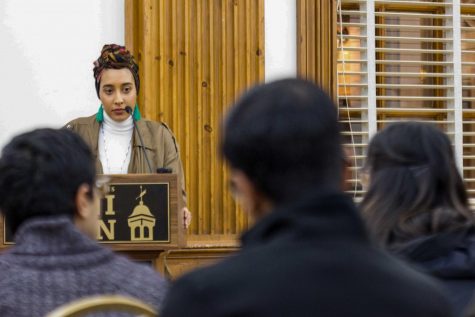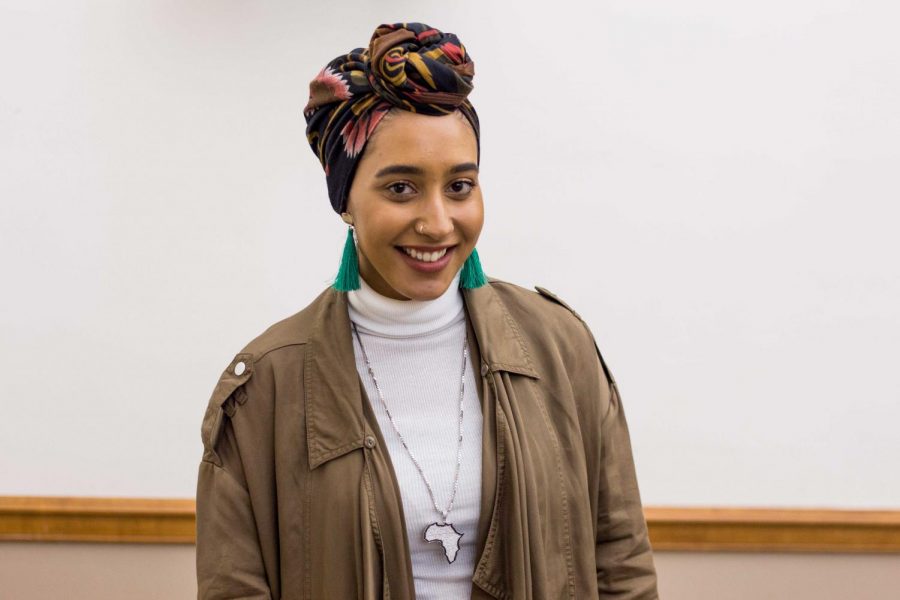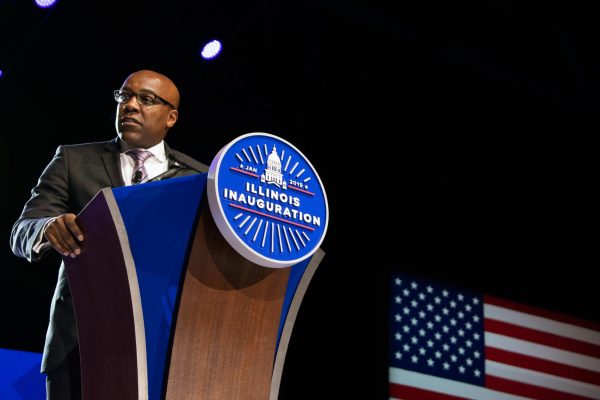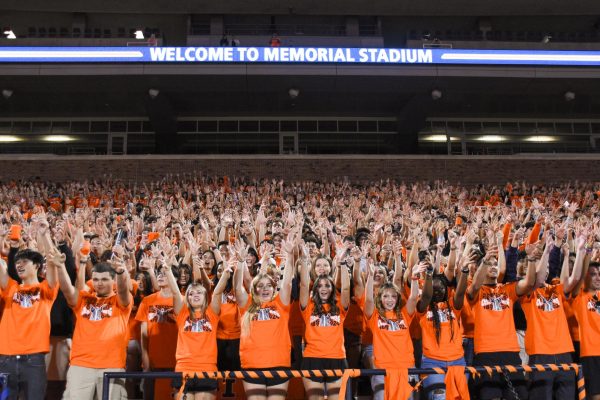First H&M Hijabi model discusses struggles in fashion industry
Portrait of hijabi model Mariah Idrissi after her speech on Oct. 31, 2017.
November 2, 2017
Mariah Idrissi began her career in modeling out of sheer coincidence. She was scouted in a London market for an H&M campaign. The modeling agency didn’t have any hijabi models on file and was looking to diversify through the “Close the Loop” campaign. The campaign focused on urging customers to recycle their clothes.
On Tuesday the United Muslim & Minority Relief welcomed Idrissi, who gave a speech on tokenism and modesty in the fashion world. The event was held at the Illini Union.
Since she started with H&M, Idrissi has graced magazine covers and commanded photo shoots around the world. And now, she’s currently touring universities, speaking about the struggles within the fashion industry.
As a child of Moroccan and Pakistani parents, the racial intersectionality of her struggles could not be more vast.

Get The Daily Illini in your inbox!
“The struggle I experienced more than racism outside of the industry was when I tried to go back to H&M after the campaign,” Idrissi said. “I reached out to them and they just said ‘oh when it’s Eid or Ramadan we will reach out for a Muslim campaign.”
As the first mainstream hijabi model, Idrissi struggled with the expectation of her to be the spokesperson of Islam in the fashion world.
“Often times people would ask me to take a stance on political issues and I would question why I have become a spokeswoman of all Muslims when I can only speak about fashion and being a Muslim,” Idrissi said.
She said she wants to use her influence to speak up about the lack of Muslim women representation of women in fashion.
“As a Muslim woman, we have limited representation within the industry; however everyone has their own struggles within the industry,” Idrissi said. “Since we champion modesty, we don’t struggle with as much of the sexualization of white women, for example.”
Idrissi highlighted stories of her peers who were forced to do topless shoots, which are justified as the nature of competition within the industry. Then, there’s the manipulation and harassment of young girls.
“The industry basically lasts from the age of 14-24. I’m hoping through this I can give young women an option of not being sexualized, but also being part of the industry,” Idrissi said.
In the past few years, the industry has shifted with the rise of self-love movements, including expanding plus-size options and hiring women with diverse sizes, skin colors and religious beliefs. However, Idrissi said there’s a fine line artists tread when they go from inclusivity to tokenism.
“It’s sometimes hard to tell what the intentions are behind a campaign and what is sincere and insincere,” Idrissi said. “Right now everyone is doing the ‘inclusive’ trend but few are actually genuine about it.”

Although Idrissi has only been a part of the Muslim modeling sphere for two years, she’s had quite the influence on young girls. Sofiya Affey, freshman in LAS, has kept up with her from the beginning and looks up to what she stands for.
“I’ve looked up to her for a while, and I still remember the day the H&M ad dropped,” Affey said. “I was just so excited to see someone look like me represented at a store I shop at.”
Idrissi has used her platform for more than just outfit-of-the-day looks. She works closely with Human Care Syria, a relief organization that does substantial work to help provide women’s products to the war-torn country.
She also started the campaign “Africa Made You Rich” to counter the narrow images people have of Africa.
“I believe anyone who has a platform should do something positive with it. My ‘Africa Made You Rich’ campaign is to combat the destitute image of Africa because we, as a major part of society, take so much from the continent but give nothing back in return,” Idrissi said.
Idrissi plans on continuing her tour of universities by heading to Kenyon College in Ohio on Thursday. Her ‘Africa Made You Rich’ campaign will be continued through a documentary she plans to start filming next year.
Amal Mir, president of United Minority & Muslim Relief and junior in LAS, organized this event in order to open the dialogue about Muslims within mass media and the overlooked struggles they face.
“I hoped to hear the Muslim hijaabi perspective from someone who has a career in such a highly sexualized industry. I specifically wanted to hear about her experiences in discovering what the line between tokenism and representation was and how to balance authenticity,” Mir said.







